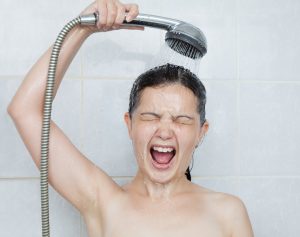
Low water pressure can be a frustrating issue that affects many Maryland homeowners. It can make simple tasks like showering, washing dishes, and watering the garden more difficult and time-consuming. In this blog post, we will discuss the top five common causes of low water pressure in your Maryland home and provide tangible solutions to help you resolve these issues.
Clogged Pipes and Fixtures
Clogged pipes and fixtures are the most common causes of low water pressure. Over time, minerals like calcium and magnesium can build up in your pipes, restricting water flow and causing low pressure.
How to fix it:
- Remove and clean the aerators on your faucets to remove any mineral buildup.
- Use a commercial pipe cleaner or a mixture of vinegar and baking soda to dissolve and remove mineral deposits in your pipes.
- If the problem persists, consider contacting a professional plumber, like Mallick Plumbing & Heating, Inc, to inspect and clean your pipes.
Old or Corroded Pipes
As pipes age, they can become corroded or damaged, leading to low water pressure. This is especially common in older homes with galvanized steel pipes prone to rust and corrosion.
How to fix it:
- Inspect your pipes for signs of corrosion, leaks, or damage.
- If you find any issues, contact a professional plumber to assess the situation and recommend the best action, including replacing the affected pipes.
Water Leaks
Water leaks in your plumbing system can cause low water pressure and wastewater and increase utility bills. Common signs of a water leak include damp spots on walls or floors, mold or mildew growth, and a sudden increase in water usage.
How to fix it:
- Inspect your home for signs of water leaks, paying close attention to areas around pipes, faucets, and appliances.
- If you suspect a leak, contact a professional plumber to locate and repair the issue.
Pressure Regulator Issues
Your home’s water pressure regulator is a device that controls the water pressure entering your home from the main water supply. If the regulator is not functioning correctly, it can cause low water pressure.
How to fix it:
- Check the pressure regulator by attaching a water pressure gauge to an outdoor faucet and turning on the water. If the pressure is below the recommended 40-60 psi range, you may need to adjust or replace the regulator.
- If you need help with this, contact a professional plumber for assistance.
Municipal Water Supply Issues
Issues with your local water supply can also cause low water pressure. This can include a drop in water pressure due to high demand, maintenance work, or problems at the water treatment plant.
How to fix it:
- Contact your local water utility company to inquire about any known issues or scheduled maintenance affecting your water pressure.
- If the problem persists, consider installing a water pressure booster pump to increase the water pressure in your home.
In conclusion, low water pressure can be caused by various factors, including clogged pipes, old or corroded pipes, water leaks, pressure regulator issues, and municipal water supply problems. By identifying the cause and implementing the appropriate solution, you can improve the water pressure in your Maryland home.
Contact Mallick Plumbing & Heating, Inc for expert plumbing services and advice on resolving your low water pressure issues!
